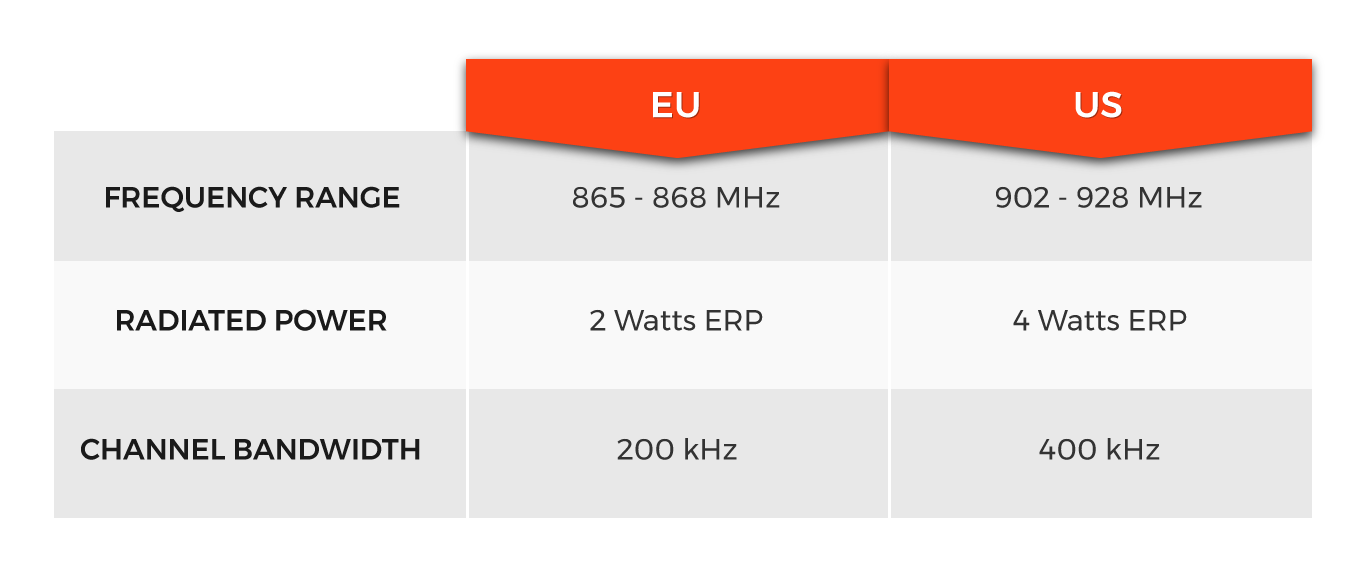New EU Upper Frequency Band
Introduction
From the onset of standardized UHF RFID regulations, approximately 2004, there have always been two main frequency bands, EU (ETSI), and US (FCC). Due to late adoption, one worldwide standardized frequency band was not an option as most frequency bands had already been allocated to other technologies or communication methods. Unfortunately, due to additional restrictions, the EU band incurred more limitations, especially in reference to the amount of allowed radiated power and each channel’s bandwidth.

Less read range and lower read rates have been obstacles for RFID deployments in countries that adopted the EU standard and frequency bands within it. For years, RAIN RFID manufacturers and advocates have pushed initiatives that would optimize the EU band to allow for more radiated power and a larger bandwidth per channel. Finally, these initiatives have paid off, and a new, Upper EU Band has been approved and is available for use as of February 01, 2019.
NEW EU Upper Band
What is it?
The European Commission signed off on the creation and use of a new, Upper Band in addition to the typical, lower EU band of 865 – 868 MHz. The new band will operate within the frequency range of 915 – 921 MHz and have a channel bandwidth of 400 kHz, similar to the current US band.

What does the EU Upper Band mean for you?
- Increased Read Range & Coverage – Due to the amount of allowed radiated power increasing from 2 Watts to 4 Watts, RFID systems on this band will see a likely increase in read range. Preliminary tests done by RAIN RFID show an increase of 40% – 50% in coverage area when used on the EU Upper Band vs. the standard, EU Lower Band.
- Increased Read Rates – An increase in read rates is due to the increase in channel bandwidth from 200 to 400 kHz, meaning systems take half the amount of time to inventory the same items, or twice the number of items inventoried in the same time frame.
- Increase in Available Products – Because the New EU Upper Band is within the FCC (US) band, now EU Upper Band systems can use FCC tags and antennas, providing an increased variety and flexibility in product options.
- Ease-of-deployment – In global deployments, testing is usually done with RFID antennas and tags in countries that adhere to the EU frequency and with a different antennas and tags in countries adhering to the US frequency band. Likely, these antennas and tags will perform differently depending on their respective frequency bands. With the creation of the new EU Upper Band, the same FCC antennas and tags can be used throughout global deployments. This reduces risk and cost by allowing the company to deploy the same RFID antennas and tags across various countries.
What are the potential unknowns for the EU Upper Band?
- Country Adoption – As of June 20, 2019 the number of countries that have adopted the new EU Upper Band is low; however, additional countries will determine whether or not to accept this new UHF RFID band in the near future. The current countries that have accepted the EU Upper Band include – Albania, Denmark, Estonia, Hungary, Ireland, Luxembourg, Norway, Russia, Slovenia, and the UK (last updated 6/20/2019).
- Manufacturer Adoption - As of June 20, 2019, Impinj is the only UHF RFID manufacturer that has introduced products on the market certified for use on the EU Upper Band. The recently released new readers and gateways compatible with the EU upper frequency operations include the Impinj Speedway R420 reader, xSpan gateway, and xArray gateway. Other manufacturers will likely be adding products compatible with the EU Upper Band to the market as well.
Conclusion
For more information on the EU Upper Band, checkout GS1.org and the RAIN alliance website. See the updated GS1 country regulations here.
If you would like to learn more about all things RFID, check out our website, our YouTube channel, comment below, or contact us.
To read more about how RFID is being used worldwide, check out the links below!
